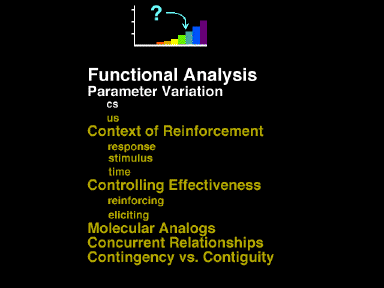 Slide 2-29
Slide 2-29

 Slide 2-29
Slide 2-29
This list specifies the types of analyses carried out to date. The first examined the nature of the relationship between the stimuli and the obtained responding. Responding could have been maintained by a fixed number of stimuli (e.g., in the previous research-5), or responding could have been maintained for a fixed amount of time (e.g., in the previous research-30 seconds), or finally responding could have been maintained throughout the approximate second half of the interval.
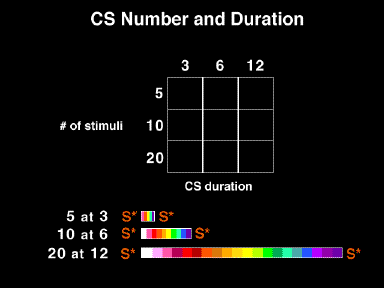 Slide 2-30
Slide 2-30
This factorial design would allow us to determine the most appropriate way to characterize the responding. If responding is maintained for a constant number of stimuli (e.g., 5), then we should see responding to the last 5 stimuli regardless of how many stimuli are in the whole interval. If responding is maintained for a constant amount of time preceding the reinforcer (e.g., 30s), then we should see responding for 30 seconds regardless of the overall interval duration. And finally, if behavior is relatively maintained (e.g., responses occur to the last half of an IRI), then we should see responding in the second half regardless of the interval duration or number of stimuli
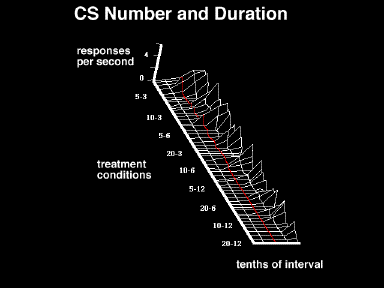 Slide 2-31
Slide 2-31
These were the obtained results. The best first-order fit was provided by proportion of the interval. Therefore, the x axis indicates tenths of the interval. The various treatment conditions are along the z axis with each of the birds exposed to a treatment condition consecutively positioned within its respective group
As can be seen, most responding could be characterized as occurring in the second half of the interfood interval. A secondary effect was that responding was delayed slightly in very long intervals with long stimuli and occurred slightly earlier in very short intervals with very short stimuli.
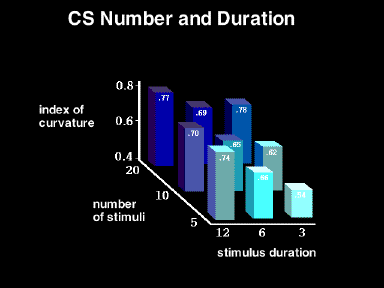 Slide 2-32
Slide 2-32
This slide illustrates the index of curvature or the degree to which the responding was positively accelerated or negatively accelerated.
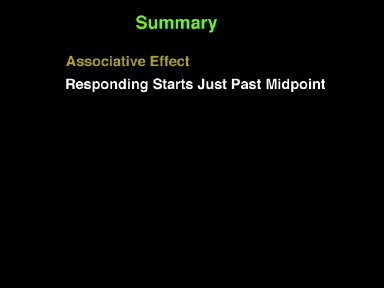 Slide 2-33
Slide 2-33
In general, it appears most appropriate to characterize the responding as occurring to the stimuli in the second half of an interfood clock.
Date Last Reviewed : May 26, 2003